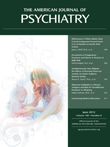Differing Amygdala Responses to Facial Expressions in Children and Adults With Bipolar Disorder
Abstract
Objective:
Child and adult bipolar patients show both behavioral deficits in face emotion processing and abnormal amygdala activation. However, amygdala function in pediatric relative to adult bipolar patients has not been compared directly. The authors used functional MRI to compare amygdala activity during a face processing task in children and adults with bipolar disorder and in healthy comparison subjects.
Method:
Amygdala responses to emotional facial expressions were examined in pediatric (N=18) and adult (N=17) bipolar patients and in healthy child (N=15) and adult (N=22) volunteers. Participants performed a gender identification task while viewing fearful, angry, and neutral faces.
Results:
In response to fearful faces, bipolar patients across age groups exhibited right amygdala hyperactivity relative to healthy volunteers. However, when responses to all facial expressions were combined, pediatric patients exhibited greater right amygdala activation than bipolar adults and healthy children.
Conclusions:
Amygdala hyperactivity in response to fearful faces is present in both youths and adults with bipolar disorder. However, compared with bipolar adults and healthy child volunteers, pediatric bipolar patients showed amygdala hyperactivity in response to a broad array of emotional faces. Thus, abnormal amygdala activation during face processing appears to be more pervasive in children than in adults with bipolar disorder. Longitudinal studies are needed to elucidate the mechanisms of this developmental difference, thus facilitating developmentally sensitive diagnosis and treatment.



